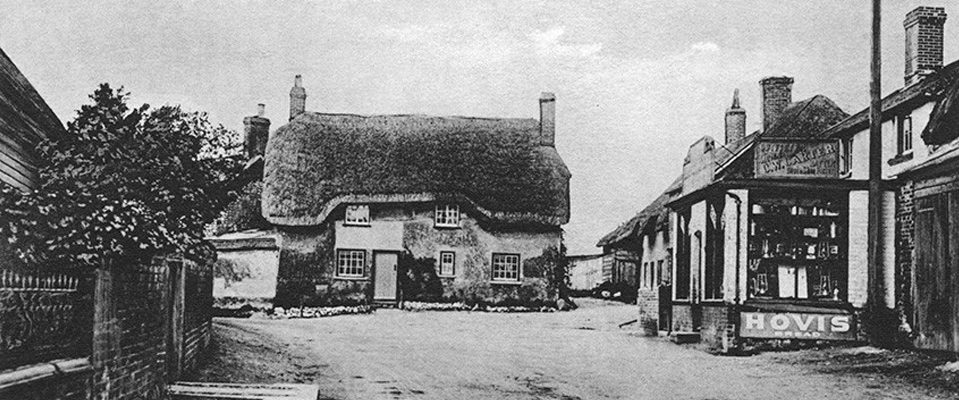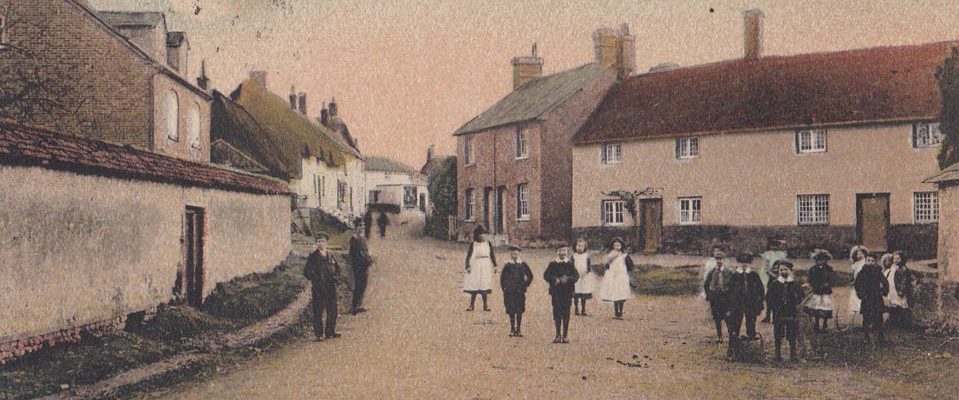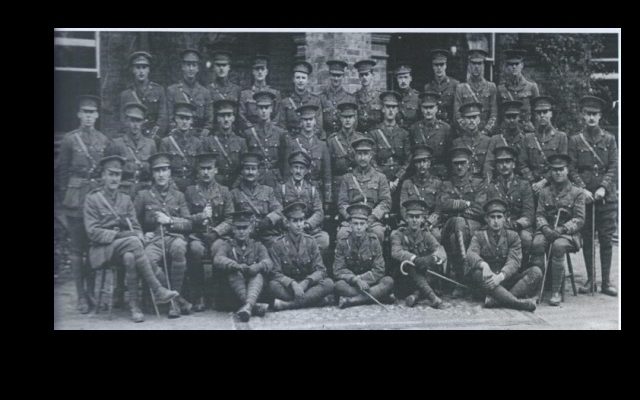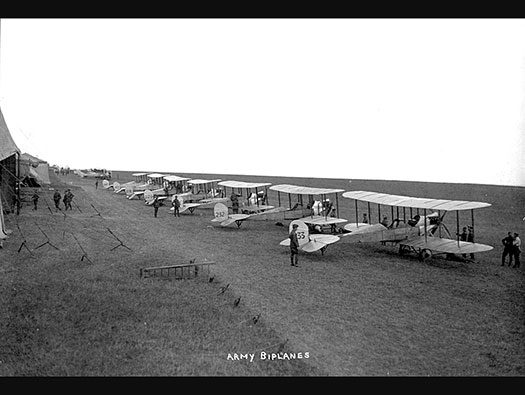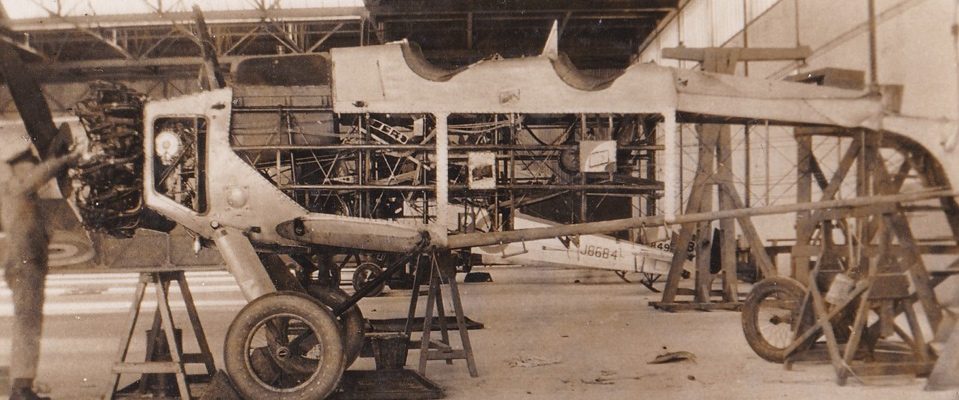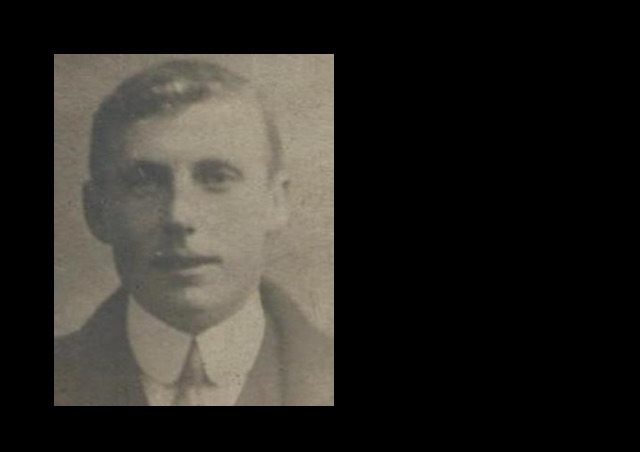Present Map
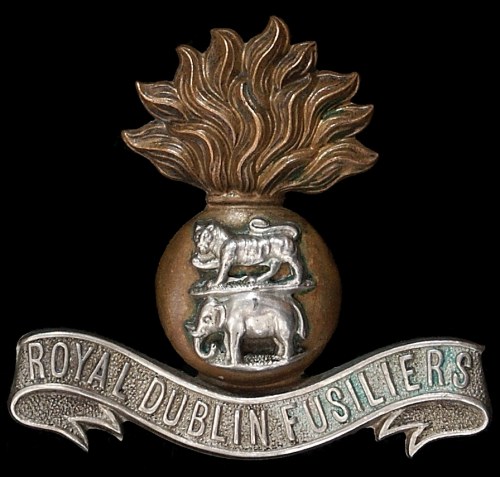
Address: 135 Jacks Lodge.
Regiment: Royal Dublin Fusiliers.
William was born at Netheravon in the January of 1885 to Amelia, who was unmarried at the time of his birth and so his father is unknown. Baptised at Netheravon by the Reverend John Baskett on the 3rd of May 1885, William and his mother lived with the family of Charles (Chas) Drewitt, a woodman from Fittleton, who was married to Amelia's sister Annie. Charles and Annie also had children, Cecil and Ernest living in the house, as well as his widowed mother-in-law, Sarah. Amelia was at this time employed as a Cook.
By 1901, William was 16 years old and still living with the Drewitt family, but now at No. 135 Jacks Lodge and was employed as a Carter on a farm.
By 1910 William was now employed as Bricklayers labourer and married Florence May Thorne on the 26th November. They settled at No.4 Clifton Row, West Street in Salisbury. Florence already had a son called (Ernest) William and more children followed, Arthur, Morris and Fred. William had also served for six years in the 3rd (Special Reserve) Battalion of the Duke of Edinburgh's (Wiltshire) Regiment.
Despite being 30 when Britain entered the war William presented himself to the recruiting office at Salisbury on the 14th September 1914, and re-enlisted into the Wiltshires.
Unfortunately for him the Wiltshire Regiment had already filled their initial quota of the men, so four days later William was transferred to the 7th (Service) Battalion of the Royal Dublin Fusiliers.
On 6th August 1915, the 7th Royal Dublin Fusiliers embarked on HMT FAUVETTE, the shipped that landed them at 'C' Beach at Salt Lake Bay. During his time in the Gallipoli Peninsular William developed a cough which steadily got worse and developed into tuberculosis. Eventually he was sent back to England in October 1915 to the King George Hospital on Stanford Street in London. With no further treatment available, William was discharged from the Army on 18th December 1915, as no longer fit for military service and returned home to Florence and his four boys.
Sadly though his health continued to deteriorate and he died at Salisbury on the 6th May 1916, being buried at Devizes Road Cemetery on the 10th. Despite having been discharged from the army six months previously, William was given an Imperial War Graves headstone, on which Florence chose the inscription, "I sought the Lord and he Heard me at Rest"
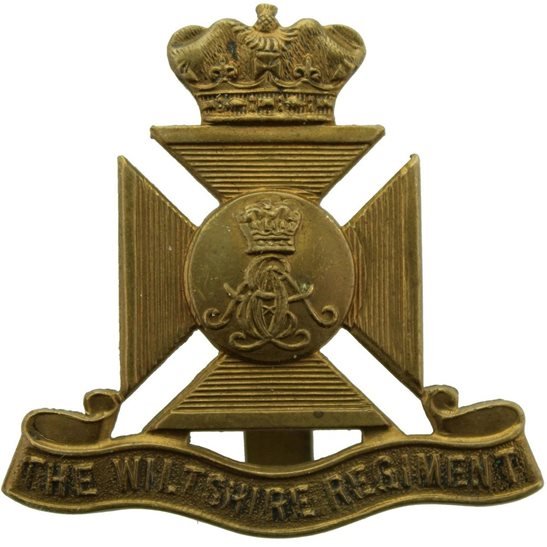
Address: Known to have lived on the High Street, Netheravon.
Regiment: Duke of Edinburgh's (Wiltshire) Regiment (1 Wilts).
The first chid of John Sawyer, a personal groom from Netheravon, and Mary (nee Harris) from Coombe Bissett, George was born in Ablington in 1889. By 1891 the family lived in Netheravon High Street and over the next 10 years George was joined by Charles, Frederick, Frank, Kate and Herbert. The 4 elder boys went to the Netheravon school, but by 1911 the family had moved to West-Down Barn near Winterbourne Gunner. As War started, 25 year old George was living in Salisbury and travelled to Devizes to enlist. After training and a short leave he was drafted and landed in France on 20th July 1915. Four days later he and 54 other men joined the 2nd Wiltshires in trenches at Richebourg St Vaast. It is thought that he was wounded and returned to England, but by October 1918 with the war drawing to an end he was posted to the 1st Wiltshires at Neuvilly. By now the trench warfare had be left behind as the Allies advanced. In the very early hours of 23rd October less than 3 weeks before the Armistice, the 1st Wiltshire were assaulting German positions when George was killed by machinegun fire. Aged 30 George was the last of Netheravon’s soldiers to die by enemy fire and was buried with 60 others in the Ovillers New Communal Cemetery, Solesmes.
Address: 2 Coombe.
Regiment: Service and Regiment unknown.
George Oliver Cannings is recorded on the Fittleton Memorial Lectern but did not take an active part during the actual fighting in World War One. George was born in 1900 at Coombe as the eldest child to Oliver, a Carter who had also been born in Coombe, and Annie (née Stone) who was from Easterton. The couple had been married at Enford on the 22nd of October 1898. Together with his younger siblings, Freda, Ethel, Stanley and Elsie, the family lived at No.2 Coombe.
George was only fourteen when the war began for Britain so, whether he liked it or not, he did not join up in that initial excitement that saw many enlist. He was probably conscripted at the age of seventeen, when the age to travel to the front had been reduced to eighteen years old, the idea being that you trained the seventeen-year-old, so that by the time his training was complete, he was eighteen and ripe enough to be sent forwards. The war would have ended though before George had a chance to fight but, as a new conscript, he was retained in the army whilst others, that had served longer, could be released. There is no Medal Index Card for George, which means none were issued to him. There is also no record of him in the Commonwealth War Graves Commission which means he does not have one of their grave markers, and he has no record in the Soldiers Effects register either. All of this evidence points towards the conclusion that George either died of an accident, or an illness whilst still in service. George’s death is recorded in 1920.
To find out more of the men from Enford who lived on the Longstreet : Click Here
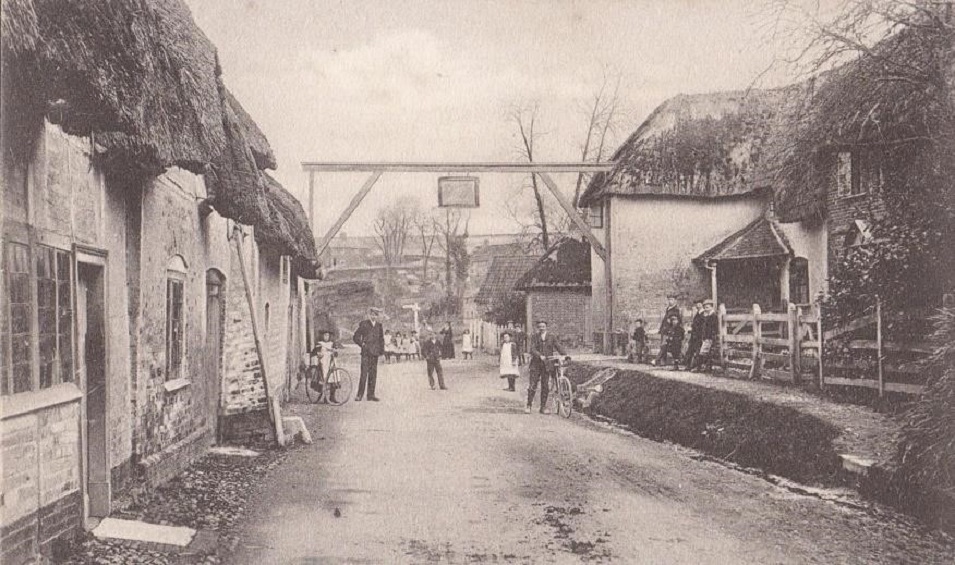
To visit the historical map: click here

Address: Address in Netheravon unknown, remembered on the war memorial.
Regiment: Duke of Edinburgh's (Wiltshire) Regiment (3 Wilts).
Born in 1880 at Netheravon, known as Alfred Edwin and the eldest of two sons born to Charles, a farm labourer, and Emma who had been born in Tilshead. Tragically just a few months after the birth of his second son Charles was killed, crushed under the wheels of a wagon, Alfred was barely two years old and Emma a widow at the age of 26. Charles was buried at All Saints Church Netheravon.
Emma remarried George Macklin, a tradesman who was living in Fittleton. The family moved to Durrington where George was employed as an agricultural labourer and latterly a road cleaner. Alfred and Charles were general labourers in the local military camps.
On 29th October 1901 Alfred, aged 21, enlisted into the 3rd Battalion of the Wiltshire Regiment which became known as the Territorial Force in April
1908, although it changed its nomenclature to the 4th Battalion.
The family had moved to a new house in Durrington called Belmont Villa and
Alfred had started courting Ethel May Hibberd who he married in Wylye on the 10th March 1912 and moved to 242 Bulford.
On the outbreak of war Alfred spent some time instructing before being sent to the front at some point in 1916 and on the 7th June 1917 he was part of the 6th Wiltshires attack on the Messines-Wychaete Ridge. After the attack the Battalion moved to relieve the 8th Battalion of the Buffs from their partly completed trench system just east of Oostterveane Wood where Alfred
was killed in a bombardment on 12th June 1917.
He is remembered on the Menin Gate, Ypres.
Alfred's widow, Ethel, moved to the Lane in Durrington and married James Hall in December 1917.
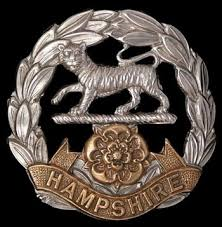
Address: Dog and Gun Inn.
Regiment: 2/7 Battalion the Hampshire Regiment (2/7 Hamps).
Percy was one of 10 children born to his father George the Innkeeper of the Dog and Gun. George was firstly married to Caroline King, they had 5 children together before she died in 1872 aged just 30. Three years later George married Mary (nee Howell) from Netheravonl, she bore him a further 5 children before he died in 1903, leaving Mary a widow looking after 10 children and the Inn. Eventually Mary sold the Inn and moved with her children to Bournemouth where Percy took work as a Printer’s Apprentice. He became a Territorial in the Hampshire Regiment and on the outbreak of war joined the 2/7th Battalion sent to India as garrison troops, relieving a regular battalion for the Western Front. In September 1917 2/7th Hampshires were sent to Mesopotamia (Iraq) and placed on lines of communications work. The climate and living conditions took their toll on the troops including Percy. He died of cholera in April 1918 aged 29 and is buried in Baghdad (North Gate) Cemetery.

Address unknow: Remembered on the war memorial.
Regiment: 3rd Battalion the Wiltshire Regiment (3 Wilts).
Born in the spring of 1882 and baptised on the 9th July of the same year in All Saints Church Netheravon. His parents were George, from Netheravon, and Sarah, from Devizes, and he had 3 elder brothers. George was a 'Carter' and
by 1901 Albert was working with George as an 'under Carter'. Albert married Florence Rose Best in 1908 and they had two children, a boy and a girl.
Albert had joined the 3rd (Special Reserve) Battalion of the Wiltshire
Regiment and on the outbreak of war was mobilised and sent to join the 1st
Battalion of the Wiltshires. He saw action at the 2nd Battle of Ypres and
relieved the French at Vimy Ridge. The Battalion was moved to St Pol where they remained for the first day of the Somme.
On 4th July Albert's Battalion was sent to the trenches of the Leipzig
Salient and this is where on the 5th July the 32 year old Lance Corporal was killed, his body was never recovered and he is remembered in Fittleton and on the Thiepval Memorial.

Address: Haxton Bridge house.
Regiment:Duke of Edinburgh's W(Wiltshire) Regiment (2 Wilts).
Leonard’s father Alfred was a farmer from Haxton and his mother Louisa was born in Netheravon; with their 4 children they lived with Alfred’s uncle Samuel Sheppard in Haxton. After schooling Leoanard worked on his father’s farm together with his 2 brothers and sister Maisy, a Dairy Maid. Leonard’s father died in 1913 so when war was declared Leonard did not immediately join up as work on the farm was pressing. He volunteered in 1915 and after training joined 2nd Wiltshires, a regular army battalion. In late September 1917 the battalion was in the line near the Belgium village of Wytschaete. Trench routine required wiring and trench repairs to be carried out at night; between 27 September – 4 October 1917 the battalion lost 2 killed and 10 wounded on this task to enemy shellfire. Leonard was one of those wounded; he died on 3 October 1917 at a Dressing Station and is buried in the nearby Outterstene Communual Cemetery, Bailleul.

Address: Haxton Bridge house.
Regiment: Duke of Edinburgh's (Wilthire) Regiment (2 Wilts).
Born in 1887 to Jacob, from Southampton, and Sarah, from Figheldean. Horace was one of 8 children. His father was the miller at the Figheldean mill and this was also where the family lived.
On 27th August 1904, after leaving school, Horace enlisted into the Duke of Edinburgh's (Wiltshire) Regiment, he was only 14 and had to lie about his age. After several brushes with the law Horace was discharged and returned to Fittleton to work as a farm labourer.
On the outbreak of war Horace rejoined the 2nd Battalion the Wiltshire Regiment, arriving in France on 11th November 1914 and witnessing the Christmas truce that year.
Horace was killed between 10th and 13th March 1915 at the Battle of Neuve Chappelle, his body was never recovered but he is remembered on the Menin Gate at Ypres as well as the Memorial Lectern in Fittleton Parish Church.
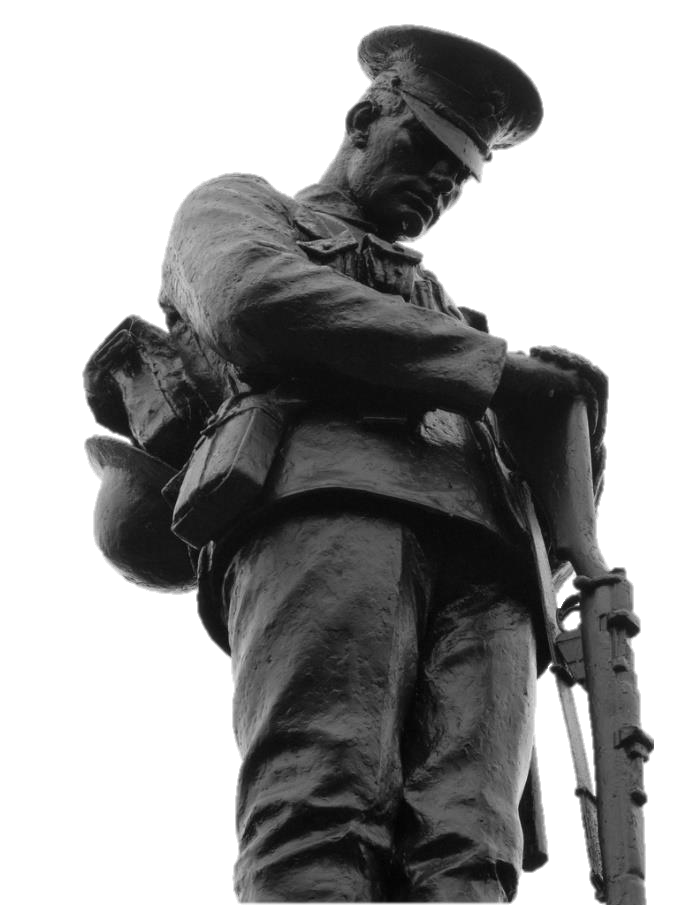
Click here to view the Historical map
1. 13041 Private Smith.
2. 24618 Private McGuinness.
3. 11397 Private Rose.
4. 7020 Private Holmes.
5. 912 Trooper Phillips.
6. 27510 Private Mackenzie.
7. 28534 Private Chittleburgh.
8. 40190 Gunner Hunter.
9. 27570 Private Phillips.
10. 6244 Private McCreedy.
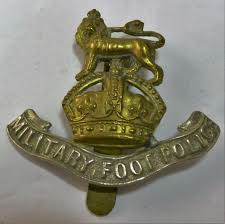
Address: Compton Farm Barn.
Regiment: Military Foot Police.
Known as James and born in Enford in late 1883 to his parents James, an agricultural labourer and a native of Enford and Rosanna, also a local girl. James was the third son and fifth child born to the couple. The family lived in Compton Farm Barn, just outside of Enford.
James’ mother died in 1898 and his father moved the family to Enford itself and by 1901 James’ eldest brother, Walter, had married Emma Holder at Fittleworth in Sussex and was living in South Malling. Frank, James’ next elder brother was also to be married, this time in Enford and to Edith Ellen Fay, they were to go on to have ten children and Alfred, James’s other brother, had enlisted into the army and was serving in the Anglo-Boer war. James was living in Enford with his sister Gertrude and was employed as a horseman on a farm, they were to relocate to Enford Farm.
On the outbreak of war James immediately enlisted into the Duke of Edinburgh’s (Wiltshire) Regiment and became part of the 5th (Service) Battalion and on 1st July 1915 he set sail for Alexandria and ultimately Cape Helles and Gallipoli, landing unopposed on ‘V’Beach. James was to be wounded on 10th August and sent to Lemnos to be treated, after recovering he joined the ranks of the Devonshire Regiment from where he transferred into the Military Foot Police and was deployed to Mesopotamia, modern day Iraq. At some point in 1919 James fell sick and he died in Basra Hospital on the 30th May 1919. He is now buried in the Basra War Cemetery.
To visit historical page click here
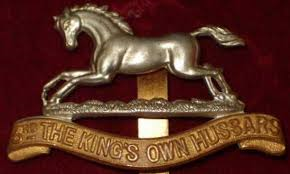
Address: 341 Haxton.
Regiment: 3rd (Kings Own) Hussars.
George MacDivitt was born in 1897 and was the first child of Arthur and Sarah MacDivitt. Arthur was a driver with the Royal Engineers and the family lived in Aldershot, remaining there after discharge as Arthur worked as a groom. When the Cavalry School moved to Netheravon in 1904, the family relocated to Haxton. George's mother died when he was fourteen but his father remarried just a year later.
Too young to enlist at the outbreak of the war but, not surprisingly with his military connections, George enlisted at Pewsey as soon as he reached the age of 18. He joined the 9th Reserve Regiment of Cavalry based at Shorncliffe. On completion of his training, he joined the 3rd (Kings Own) Hussars.
George was sent to France towards the end of 1916 and the regiment served a number of tours in the trenches. George's first major action was the battle of Cambrai in 1917, the first major deployment of tanks in military history. Having survived the massive German offensive in early 1918, George and his regiment saw action throughout 1918, fighting in the battle of Amiens and the second Battle of Cambrai. Around the date of the Armistice, George fell ill and died of influenza.
To visit the historical map click here

1. 19100 Private Sawyer (George) - known address just the High Street.
Regiment: Duke of Edinburgh's (Wiltshire) Regiment (1 Wilts).
2. 6820 Lance Corporal Dyke (Albert)- Address Unknown.
Regiment: Duke of Edinburgh's (Wiltshire) Regiment (3 Wilts).
3. 25872 Private Keel (Alfred) - Address Unknown.
Regiment: Duke of Edinburgh's(Wiltshire) Regiment (6 Wilts).
Click here to visit the historical map

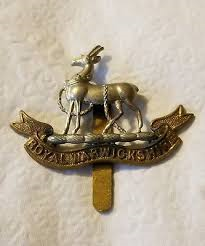
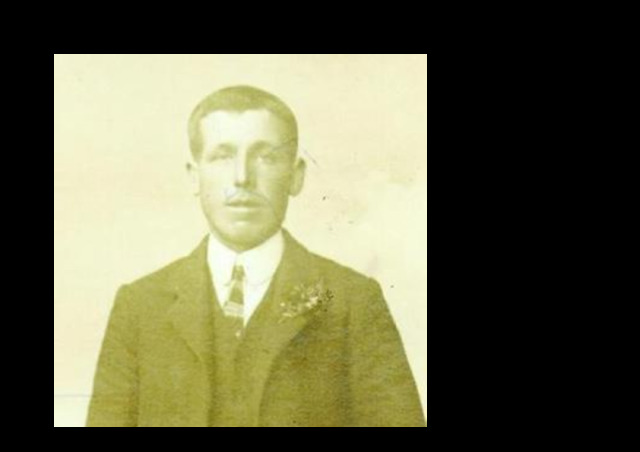
Address: Fittleon Field Barn.
Regiment: Royal Warwickshire Regiment.
Born in Fittleton on the 19th of January 1890 to Charles and Drusilla (nee Stevens) John was one of six children. John’s mother Drusilla died on the 20th of October 1890 and is buried in Fittleton church. John left school to become a carter on the farms that surround Fittleton. John did not get called up until 1916 aged 36 as part of the Derby Scheme joining the Warwickshire regiment. He was sent to France in July 1916 but John was not a healthy man and shortly after arriving he fell ill. After his second bout of illness he was sent back to England to recuperate where he was to learn that his younger brother Charles had been killed in France. Once well he was posted to 9th Warwick’s in modern day Iraq. After landing in Basra he became sick again eventually joining his battalion in the fighting near Baghdad. Hospitalised again this time with jaundice he still was not invalided out of the service. Back with his battalion he fought in the action at Tuz Khurmatli in April 1918 before moving to Persia (Iran). It was here that John succumbed to his poor health and died on the 8th of October 1918 of pneumonia. He is buried in the Tehran Military Cemetery. As well as his brother Charles killed in 1917 his brother James was killed in 1915 and a step bother, Luther, in 1917.
To visit the historical page click here
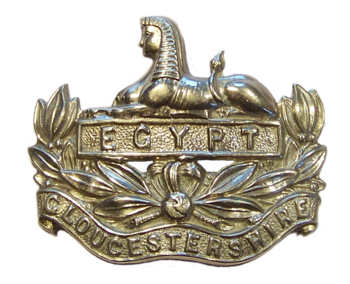
Address: 70 Fifield.
Regiment: Gloucestershire Regiment
Born in Broad Chalke in 1892, Percy was the youngest of eleven children to Robert, an agricultural labourer from Bishopstone, and Elizabeth Anne, also from Board Chalke. When Percy was very young the family moved to Amesbury where they lived in a small house on Bake House Lane.
Percy’s mother died in June 1904, aged 49, and the family was split up, living in Lugershall, Fifield, Amesbury, Salisbury and Percy who moving to Cleeves Farm at Ebbesbourne-Wake, a small village lying south-west of Salisbury where he became a farm labourer. The farm was owned by William Weeks, who, like Percy, had been born in Broad Chalke.
When the war broke out Percy was 22, he did not enlist straight away but was conscripted later in the war and following training was posted to the 12th (Service) Battalion (Bristol), the Gloucestershire Regiment. He arrived in time for the final offensives of the war, including the second battles of the Somme and the battle of Ephey. In late September 1918 the Regiment took part in the Battle of the Canal du Nord where on the 28th September Percy was killed. His body was never recovered and is remembered on the Vis-En-Artois Memorial.

Address: Compton Farm Barn.
Regiment: Duke of Edinburgh's (Wiltshire) Regiment (1 Wilts).
Francis Worsdell was born at Enford in November 1878 to Annie Worsdell. In 1881, Annie married George Stokes, an agricultural labourer from Chitterne and they moved to Shrewton. By the age of 12, Francis was working as a farm labourer. Annie and George had 6 children and relocated to Rollestone where both George and Francis were employed as carters, In 1909, Francis married Sarah Durrant and set up home in Shrewton.
As a married man, Francis did not volunteer at the start or the war. He remained in Shrewton, working on the land, until conscripted probably late in 1917. Receiving his call up papers, he reported to the Salisbury recruiting offfice and was sent for basic training in Dorset. After arriving in France, he undertook his in-theatre training in one of the Infantry Base Depots before joining the ranks of the 1st Battalion the Wiltshire Regiment at the front.
In September 1918, the British Army was well into the "one hundred day offensive" and advancing on all fronts. On 1 September 1918, the battalion successfully assaulted the village of Beaulencourt at a cost of 61 killed, wounded or missing. Francis Worsdell was one of the killed. He is now buried in the Beaulencourt British Cemetery at Ligny-Thilloy
To visit historical page click here
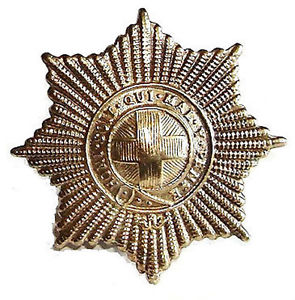
Address: 105 High Street.
Regiment: 2nd Battalion Coldstream Guards.
Known as Frank and born at Enford on 18th December 1891 to Tom, an
agricultural labourer (from Enford) and Julia who was from Netheravon and was a domestic servant. Frank was the 4th of ten. By 1911 the family had moved to 105 the High Street at Netheravon. Frank was employed as a general labourer.
Frank was 23 and living in Marlborough when the war broke out, he did not enlist straight away but enlisted under the Derby Scheme or when conscription was brought in. He reported to Salisbury recruiting office and indicated that he wished to join the Coldstream Guards, who only accepted volunteers. Frank eventually joined the 2nd Battalion of the Coldstream Guards, most likely after the Battle of the Somme in early autumn 1916 and then taking part in a number of notable actions between then and 1918.
By early June 1918 the Battalion was holding the line at Ayette and on the
3rd June they were relieved by the 1st Battalion Irish Guards before
marching back to trenches at Monchy, during this operation Frank was killed.
His father, now living in Collingbourne Ducis, received the telegram along
with £9. 6s. of back pay. Frank is buried at the Bienvilliers Military
Cemetery.
To visit the historical page click here
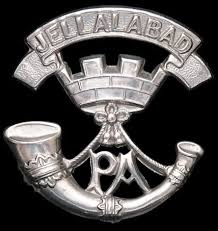
Address: He lived at High Bank Cottage.
Regiment: 8th (Service) Bn Prince Albert's Somerset Light Infantry (8 SLI).
Born in Aldershot on 27th February 1896 to John, a groom and coachman from Mentmore, Buckinghamshire, and Fanny, a dressmaker from Aston Clinton, also Buckinghamshire. William had an elder brother and sister when he was born. In 1904 the Cavalry School moved from Chelmsford, Essex, to Netheravon and the family moved to Newton, just outside of Enford. John took up a job as a groom at the school. The family had also grown, there were now a further 5 children. William, at the age of 15, was employed as a farm labourer and his elder brother Leonard was also a groom at the Cavalry School.
At the outset of the war William was eighteen years old but did not enlist straight away (his brother Leonard enlisted into the 5th Battalion the Duke of Edinburgh’s (Wiltshire) Regiment. He was conscripted in 1916 and was directed to the 9th (Reserve) Battalion of the Somerset Light Infantry which had landed in Le Havre on 10th September 1915 and had participated in the Battle of the Somme. William saw action at the 3rd Battle of Ypres which started on 31st July 1917 and was part of the offensive to take the Gheluvelt Ridge on the 4th October 1917 where he was killed.
William’s body was never identified and he is now remembered on the Tyne Cot Memorial in Ypres.
To visit the historical page click here
Pictured below is Lt Col J W Scott (The Commanding Officer of William Howcutt):
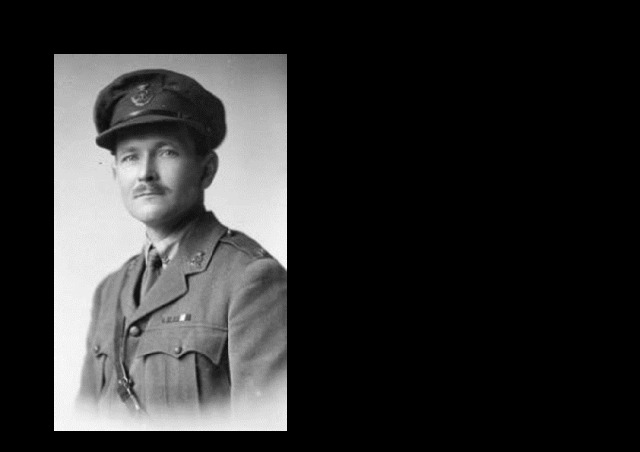
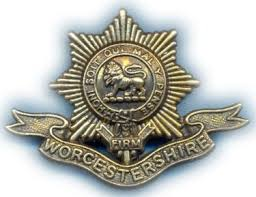
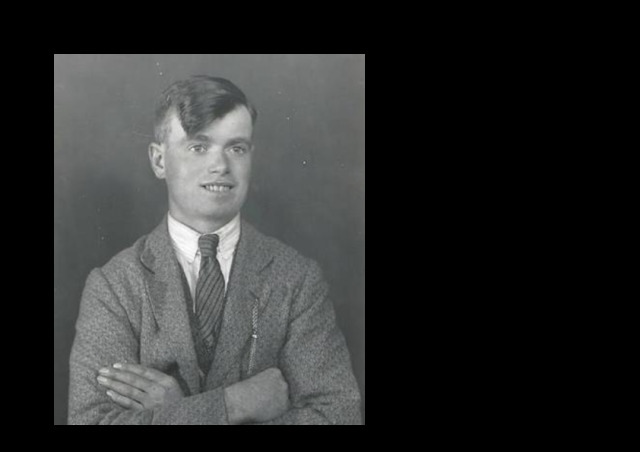
Address: Fittleton Field Barn.
Regiment: 2nd Battalion The Worcester Regiment (2 Worcesters).
Luther Edwards was born in Fittleton in 1893. His father was a farm labourer and the family lived in Coombe, a small hamlet between Fittleton and Enford. His father died when Luther was 3 years old and the family went through a difficult time, relying on the Parish Relief fund . In 1901, his mother remarried and the new family moved to Fittleton Field Barn and half-siblings Fanny, Vera and George were born between 1902 and 1906.
At the age of 14, Luther found work as an under carter, working on farms in the area. In 1915, he enlisted at Pewsey but, being too late to have a choice in his regiment, he was enlisted into the Worcestershire Regiment and sent for training at Swanage. After in-theatre training, he joined the 1st Battalion at the front. Possibly, as a result of a wound, he finished up in the 2nd Battalion. In September 1917, his battalion were heavily engaged in the battle of Passchendaele. In a very confused situation, Luther Edwards was one of the many fallen. Tragically, he would have been informed that his two step-brothers had already been killed. Luther's body was never identified and he is commemorated on the Tyne-Cot Memorial Wall.
To visit the historical page click here
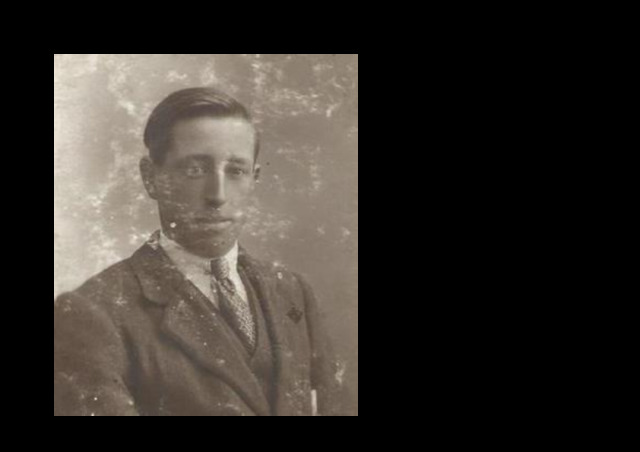
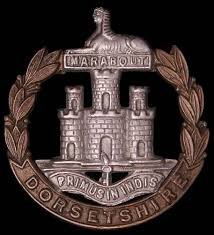
Address: Fittleton Field Barn.
Regiment: 4th (Extra Reserves) Battalion East Surrey Regiment (4 Surrey).
Henry Wilshire was the fourth child of Charles and Drusilla. He was born in December 1887 at the family home of 344 Fittleton where his father worked as a carter on a local farm. Another son followed before Drusilla died in 1890. Charles remarried in 1901 and the family moved to Fittleton Field Barn which lay between Fittleton and Beaches Barn and, during this period, Charles and his new wife had three more children.
Henry's first job was that of a contractor's labourer, possibly at the Cavalry School in Netheravon but around 1912, he moved to Surrey finding labouring work at the Regimental Depot of the East Surrey Regiment. Henry enlisted in the East Surrey Regiment, probably under the Derby Scheme, in 1915 at Kingston-upon-Thames.
Arriving in France in March 1916, the regiment formed part of the reserve troops for the Somme offensive, seeing continuous action throughout the battle of the Somme until late August. Between August and March 1917, the battalion undertook regular tours in the front line around Arras. In March 1917, a German shell exploded amongst his platoon, killing 7 and wounding 14. Henry Wilshire was killed and lies buried side-by-side with his 6 other comards in the Faubourg D'Amiens Cemetery at Arras.
To visit the historical page click here

Address: 107 The High Street (Now the Malt House).
Regiment: Somerset Light Infantry.
Born in Somerset in 1880, Richard was the eighth child of Thomas a coachman and Mary a dress maker. In 1891 the family moved to Sherborne, Dorset, where Thomas worked as a gardener and 4 more siblings joined the family, although 4 of the 12 children died in infancy. After school Richard worked nearby as a groom for a retired Indian Army General Alfred Fox-Place. The General died in 1902, and Richard came to Netheravon as a cab man. He lodged with 2 grooms in the High Street home of Harry Humphrey a carpenter from London. In 1912 in Netheravon Church Richard married Winifred Carter the daughter of Philip Carter an Enford shoemaker, and young Winifred, was born in 1913. On hostilities Richard enlisted into the Wiltshires. When his battalion embarked for India, he remained in England with those unfit for active service. In April 1915 he joined the 85th Provisional Battalion (soon the 11th Somerset Light Infantry) on home duties at Sandown Park, Seaton Delaval and Whitstable. Falling ill Richard returned home to recuperate, but died of pneumonia on 26th February 1917. His headstone in our churchyard is inscribed ‘Thy Will be Done’. Young Winifred died in 1918 and Richard’s widow lived until 1971.
To visit the historical map click here

Address: Compton Farm Barn.
Regiment: Duke of Edinburgh's (Wiltshire) Regiment (2 Wilts).
Born 1894 in Enford to Anna (nee Taylor) however, Oliver’s father is not quite as certain but most likely it was William Worsdell, who had been at one time Anna’s stepson. Anna’s first husband was much older than her and himself a widower with five children, one of whom was William. In the 1891 census, two years after her husband had died, William forty-four, is recorded living with Anna forty-three. In 1910 Oliver aged seventeen left to join the Army serving with the 2nd Battalion the Duke of Edinburgh’s Wiltshire Regiment in Gibraltar. At the outbreak of war his battalion was sent back to England and then on to Belgium landing in Zeebrugge on the 7th of October 1914. The 2nd Wiltshires took part in heavy fighting withdrawing back to the first line of trenches dug around Ypres where as part of the 7th Division they stopped the German advance to the Channel. Oliver then fought all through 1915 and in the Summer of 1916 found himself at the Battle of the Somme. Oliver and the 2nd Wiltshires were in action from the very first day of the Somme until the 15th of October when he was wounded alongside twelve others by enemy shell fire. He was evacuated but died of wounds on the 22nd of October aged 23. He is buried at the Puchvillers British Cemetery.
To visit the historical page click here

Address: 135 Jacks Lodge.
Regiment: Duke of Edinburgh's (Wiltshire) Regiment (1 Wilts).
Born on 10th May 1888 to Chas and Diana Drewitt at Haxton, elder brother of Arthur who was killed with the Royal Munster Fusiliers as they landed at Cape Helles in Apriil 1915. Chas was a farm labourer and then became a woodman. The family lived in a small house on the High Street in Netheravon moving to 135 Jacks Lodge at the top of Whitesheet Hill in 1901. Cecil was the eldest of 5 brothers.
Cecil enlisted in Pewsey in mid 1915 and after his initial training was sent
to France in early 1916 and joined the 1st Battalion the Duke of Edinburgh's (Wiltshire) Regiment. Cecil hadn't been in France long before he was wounded during the early phases of the Somme campaign, he was evacuated
through the medical chain ending up at the No 2 (Battle) War Hospital at
Reading where on 11th September 1916 he sadly died of his wounds.
Cecil is buried at All Saints Church Netheravon, the inscription on his
grave reads 'He Gave His Life For His Country'.
To view the historical page click here

Address: 134 White sheet Hill (Property no longer on the A345).
Regiment: Duke of Edinburgh's (Wiltshire) Regiment (1 Wilts).
Charles Hams was killed in action on 3 September 1916 during the latter stages of the Somme Offensive. His father James, a Farm Bailiff, and mother Betsy (from Enford) lived with their 5 children in High Street, Netheravn and then 134 Whitesheet Hill. On leaving school he worked as labourer in Netheravon before marrying Sarah Perret of Enford and moving to work in the racing stables at East Everleigh. When war was declared he working in the racing stables at Rockley, near Marlborough , where he lived with Sarah and three children. He volunteered towards the end of 1914 and after training was sent as a reinforcement to 1st Wiltshires. He was a Corporal when he was killed during an assault on German lines. His body was never recovered and he is one of the 72,000 men from the Somme sector listed on the Thiepval Memorial as having no known grave.
To visit the historical map click here
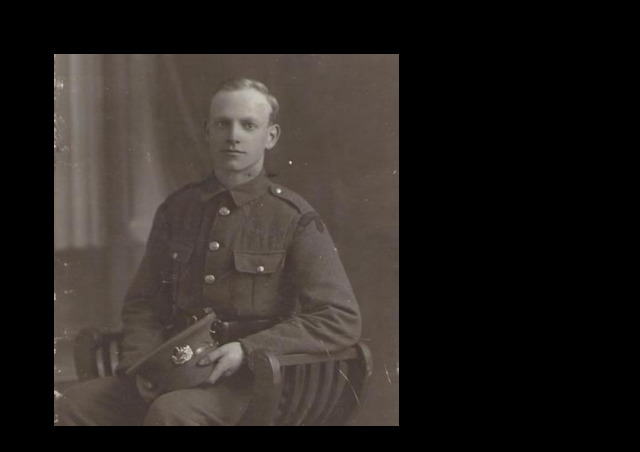

Address: Compton Farm Barn.
Regiment: Gloucestershire Regiment.
Walter’s father was an Enford cowman and his mother Mary (May)(nee Stratton) was the daughter of a farm labourer from Wilcott. Born in 1892, he had 2 elder brothers and later a younger sister and 3 more brothers. The family lived in Longstreet Enford. When they moved to Compton in 1911, Walter was already a footman on Lord Balfour’s estate near Petersfield.
Aged 22, Walter volunteered in December 1915 in the last call before conscription. With 4 brothers already in The Army he would have been disappointed to be turned back to his employer on medical grounds. He reapplied and was sent for training at Chiseldon (North of Swindon) and joined the 1st/5th Gloucester Regiment (a pre-war Territorial Force Battalion)in France in the first half of 1916. On 14th August the Battalion relieved 1st/4th Battalion of the Royal Berkshire Regiment just south of the Village of Ovillers-la-Boisselle. Only 2 days later A and D Companies failed in an attack on German trenches with 5 officers wounded and 3 other ranks killed, 99 wounded and 21 missing.
Walter was among the missing and is now remembered on the Thiepval Memorial.
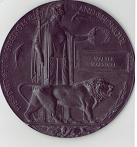
To visit the historical page click here

Address: 354 Fittleton.
Regiment: Duke of Edinburgh's (Wiltshire) Regiment (1 Wilts).
Born late 1888 to George, an agricultural labourer, and Matilda. Walter was one of ten children who all lived in the family home of No. 354 Fittleton. Walter left school in 1902 aged thirteen initially working, like his father, as an agricultural labourer. Aged sixteen in 1904 he enlisted in the Duke of Edinburgh’s Wiltshire Regiment and was posted to Pembrokeshire until 1908. Just before he was sent to Ireland in 1908 he married Mabel. Leaving the Army in 1909, he became a drayman in Salisbury where sadly his young son Albert John died aged only eight months. Recalled to the Army at the outbreak of the war he joined the 1st Battalion and was sent to France in August 1914. Walter saw action in all of the major battles of the first part of the war. In the Summer of 1916 Walter was involved in the Battle of the Somme. On the 3rd of July the 1st Wiltshires attacked the Leipzig Salient, by the 7th they had been in contact with the enemy for five straight days when they were ordered to attack again. Walter was one of the 219 casualties from the Wiltshires that day. He is buried alongside 3,475 others in the AIF Cemetery in Flers.
To visit the historical map click here
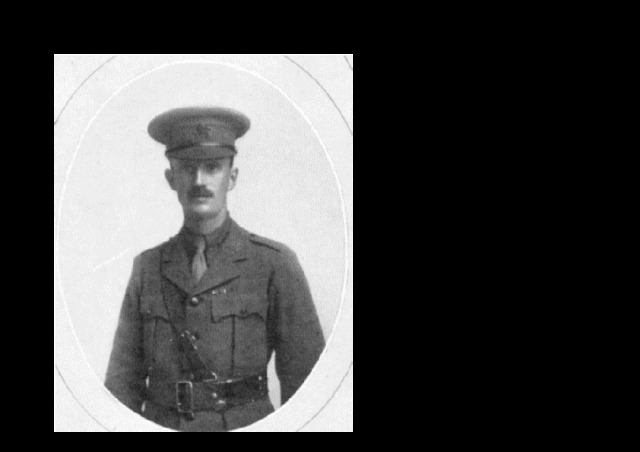
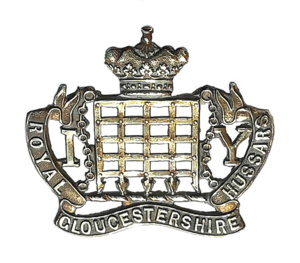
Address: Fittleton Manor.
Regiment: Royal Glouscestershire Hussars.
Born in 1877, the son of Lord Michael Hicks-Beach who was, at the time, Chancellor of the Exchequer. When he was 14, the family moved to Netheravon House where he lived the privileged life of the landed aristocracy. Having left school and travelled widely, he became the Conservative MP for Tewksbury in 1906 (a position held until his death) and was commissioned in the Royal Gloucestershire Hussars. Although he rarely visited, he maintained his connection with the local area, buying the Manor House in Fittleton.
On the outbreak of war, his regiment was mobilised and joined the newly formed Mediterranean Expeditionary Force. The regiment sailed for Egypt deploying to Gallipoli in August 1915 where they were employed as dismounted infantry in August. By the end of October, there were but 81 Officers and men fit for duty in the Regiment, Michael Hicks-Beach being one. Stationed again in Egypt, the regiment was part of a force tasked with protecting the Suez Canal. A heavy Turkish attack caused many casualties and Michael Hicks-Beach was seriously wounded, dying shortly afterwards. He is buried in the New British Protestant Cemetery, alongside his wife who had joined him in Egypt, possibly to serve as a nurse in a Voluntary Aid Detachment.
To visit the historical map click here.
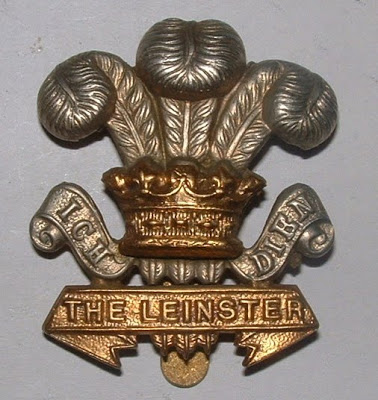
Address: Choulston Ox Barn.
Regiment: 3rd Battalion of the Prince of Wales' Leinster Regiment (Royal Canadians) - This was an Irish Regiment.
Frederick died tragically young when still only a 16 year old boy. Born to his parents Frank, a farm labourer, and his mother Sarah, he lived with 5 siblings at Choulston Ox Barn, soon to be demolished to make way for the Netheravon Camp airstrip. On the outbreak of war, aged 15, Frederick enlisted in the Wiltshires, before being transferred to the Leinster Regiment stationed in Cork. He died of an unspecified illness on 24 August 1915 and is buried in the Curragh Military Cemetery.
To visit the historical map click here
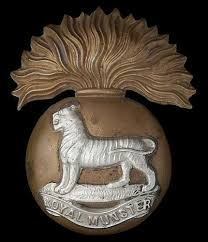
Address: 135 Jacks lodge.
Regiment:6 Royal Munster Fusiliers (6 RMF).
Arthur Drewitt was born to Charles and Diana in late 1893 and was baptised on New Year's Eve. One of 5 boys, he lived at 135 Jacks Lodge, which is on the main road to Durrington. By 1911, the family had moved to Figheldean and Arthur was employed as a farm labourer.
At the outbreak of war, Arthur, along with many friends enlisted immediately. Unfortunately, his first choice, the Wiltshire Regiment, was already fully manned and he found himself enlisted in the 6th Battalion of the Royal Munster Fusiliers. In May 1915, the battalion sailed to England from where they were deployed to Gallipoli in July 1915.
The 6th Royal Munster Fusiliers attacked along the Sari Bair Ridge where the ferocity of the defenders resistance, the searing heat and inadequate water supplies took a terrible toll of the inexperienced troops. By the time the ridge had been captured, the battalion was reduced to half strength. On 21st August 1915, the battalion was advancing in a supporting role and came under shrapnel fire. Arthur Drewitt was one of the 11 soldiers killed during this advance. His body was lost and he is now commemorated on the Helles memorial.
To view the historical page click here
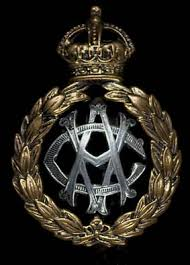
Address: 114 The High Street.
Regiment: Army Veterinary Corps (AVC).
Born in 1877, the second son of William and Ann Harding, Henry (Harry) grew up at 114 The High Street with 7 younger siblings. At 13 he followed his father to become an agricultural labourer. Seeking a better life, at 22 he joined the Royal Field Artillery in Woolwich.
Returning after 7 years service, he worked as a groom at the Cavalry School in Netheravon, and soon married Alice Sangar from Fittleton, where they lived. They had a lodger, George Frederick Collison, also a groom at the School with military service as a Hussar serving in Egypt, India and South Africa. Their daughter Matilda was born in March 1914, but only 5 months later Henry was recalled to the colours, and with his equestrian experience was badged to the Army Veterinary Corps.
With 2 of his younger brothers lost in October Henry shipped to Egypt in March 1915. Only 5 months later he succumbed to fever and was buried at the Alexander Memorial Cemetery. Later in 1916 his widow Alice married George Collison. They moved to nearby 338 Haxton, where they had a son - George Frederick. Alice survived George, who died in 1960, and she died in 1980 aged 98.
To visit the historical page click here

Address: 101 High Street, Netheravon.
Regiment: Duke of Edinburgh's (Wiltshire) Regiment (2 Wilts).
Born in Netheravon, Bertred was christened in the village church on 16 November 1890. His father Harry was a shepherd from Milston and Emma, his mother, came from Figheldean. Together with his parents and six siblings, he lived in 101 the High Street in Netheravon. By 1901, Bertred had already left school to become a bakers boy. By the age of twenty, Bertred had joined his father as a shepherd on the same farm and had enlisted into the 3rd Reserve Battalion of the Wiltshire Regiment. In 1913, aspiring to own a farm, he left for Canada, arriving in Toronto in March 1913.
At the outbreak of the Great War, Bertred returned home, preferring to serve in the Army of his home country, and he re-enlisted in the Wiltshire Regiment. Already a trained soldier, he joined the 2nd Wiltshires, in France in June 1915. Within days, the battalion was in action and, inhis first operation, Bertred's company suffered 100 casualties out of the 180 men who started the operation. In July 1915, less than two months after arriving in France, Bertred Canning was killed by a sniper. Bertred's brother, Ivor, served in the Coldstream Guards and survived the war, dying in 1972 aged 78.
To visit the historical page click here
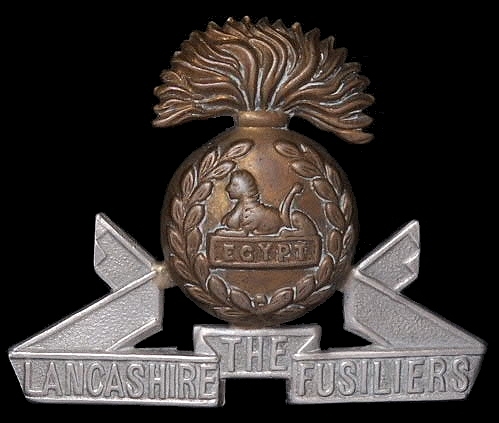
Address: London House, Kings Hill - The shop, Netheravon.
Regiment: 1st Battalionn the Lancashire Fusiliers (1LF).
Born 29 August 1888, youngest son of Isaac and Caroline (nee Holmes) who lived and worked in London House on Netheravon High Street which was then, and still is, the village store in Netheravon. Reginald was the youngest of six with three brothers and two sisters. After leaving school he became a bakers boy until a short spell, of four months, in the Royal Navy. After being invalided out of the Navy he enlisted in the Army, joining the Lancashire Fusiliers. Reginald was posted to the 1st Battalion in Multan India (now Pakistan) and then to Aden. When the war boke out the Lancashire Fusiliers returned to England for training before being sent to Gallipoli. Reginald’s battalion, the 1st Battalion Lancashire Fusiliers, was one of the first to land on “W” beach Cape Helles at 0530 on the 25th of April 1915. The fighting at “W” beach was so severe that the Lancashire Fusiliers were famously awarded six Victoria Crosses before breakfast. At some point on the 25th Reginald was killed along with 193 of is comrades, his body was never recovered, he is commemorated on the Helles Memorial and in Netheravon.

Address: 314 Haxton.
Regiment: Duke of Edinburgh's Wiltshire Regiment (1 Wilts).
Born on 1st November 1889 Walter was the youngest of six children of Felix, a farm labourer from Figheldean, and Elizabeth (nee Kite), living at 314 Haxton. In 1906 Walter enlisted in the Special Reserve of the Wiltshire Regiment, very likely with his close friend James Wilshire. Both were called up on the outbreak of war, with Walter arriving in France on 22 August 1914 as part of the first reinforcements to reach the Wiltshires. By 12 May 1915 he was a Lance Corporal when he was killed in a local attack on German trenches. James Wilshire was killed alongside him; neither of their bodies was recovered.
To visit the historical map click here
Address: 344 Fittleton and later Fittleton Field Barn.
Regiment: Duke of Edinburgh's (Wiltshire) Regiment (3 Wilts) - served with 1 Wilts.
James’ father Charles, a farm carter from All Cannings, had married Drucilla Stevens from Haxton and lived at No 344 Fittleton. James was the youngest with sister Ellen and brothers; John, William and Henry.
Born 19th January 1890, James was baptised that September, but his mother was very ill and died days later. In 1901 Charles married a widow Edith Edwards from Poulshot, whose husband had been Frank Edwards, himself from Enford. Edith brought 4 children; Sarah, Ruth, Bertram and Luther and the new large family moved to Fittleton Field Barn, midway between Fittleton and Beaches Barn. The family grew with Fanny in 1902, Vera in 1904 and George in 1906. After school James moved to Enford to work on a farm and on Valentines day 1907 he enlisted into the Special Reserve of the Wiltshire Regiment.
He was mobilised as the war started, reaching France in November 1914. LCpl James Wilshire died on 12th March 1915 in a failed evening assault on the German trenches at Spanbroek Molen alongside his friend Walter Kent from Haxton and 47 other members of the Battalion.
Their bodies never found they are remembered on Panel 53 of the Menin Gate at Ypres.
To visit the historical map click here

Address: 115 The High Street, Netheravon.
Regiment: Duke of Edinburgh's Wiltshire Regiment (1 Wilts).
Born 1897 in Netheravon, son of George and Emily Perrett (nee Coterall). James and his nine siblings lived at 115 the High Street Netheravon. James left school at 14 and went to work as a stable lad, most probably at the Cavalry School. 18 years old at the outbreak of the war James joined the Wiltshire Regiment volunteering for active service on his 19th birthday. He joined the 1st Wiltshire’s in Belgium on the 16th of January 1915 and was sent to A Company who were in the trenches outside Kemmel. On the 23rd of January James Perrett was killed alongside 7 others from his battalion, he had only been at war for 8 days. James is buried in the Wytschaete Military Cemetery, and was the third man to be lost from Netheravon.
To visit the historical page click here

Address: Beaches Barn Farm.
Regiment: Duke of Edinburgh's (Wiltshire) Regiment (2 Wilts).
Born in 1886 to William and Annie and one of nine children; Alfred was
married to Eliza-Jane and had a son, also Alfred. They lived in a cottage at
Beaches Barn Farm, just off the Netheravon to Everleigh Road.
Following in his brother, William's, footsteps Alfred joined the 1st
Wiltshires and was deployed to Chatres on 5th September 1914, serving under Captain Henry Reynolds in the 3rd Battalion, part of the Special Reserve.
The Wilthsires endured heavy fighting around the town of Haplegarde and
successfully sent the Germans back across the River Loisne, the successes
were small and on the Friday 23rd October the 1st Wiltshires suffered heavy shelling and continuous sniping around Neuve-Chapelle. This onslaught continued for several days and resulted in William being killed on the 25th October; Alfred was wounded on the 27th October and died in the Field Ambulance at Bethune on the 28th October 1914, he is buried at the Bethune
Town Cemetery.
To view the Historical map Click Here.

Address: 114 The High Street, Netheravon.
Regiment: Duke of Edinburgh's Wiltshire Regiment (1 Wilts).
William was born in 1884 to William (Senior), a labourer on the Hicks-Beech estate, and his wife Annie, who was raised in Enford; William was one of nine children. Joining up in 1903, he served for seven years in the Wiltshire Regiment before leaving and finding employment in the India Rubber Works in London. On mobilisation William returned to the Colours, reporting to the Regimental Depot in Devizes before joining the 1st Battalion of the Wiltshires, stationed at Tidworth. On 13 August 1914 the Battalion crossed the Channel and then moved by train and forced march to the Mons area of Belgium. The 1st Wiltshires fought delaying battles throughout August and September receiving their first much needed reinforcements on 5 September, amongst which his younger brother Alfred was numbered. By 23 October 1914 the weary Battalion was holding a temporary line in the vicinity of Neuve-Chapelle, Belgium. Sustained German attacks Sunday 25 October were defeated at great cost. William was one of 37 Wiltshires killed, his body was lost in the fierce and confused fighting. His brother Walter escaped unscathed only to die of wounds received just two days later. Shortly afterwards telegrams were received by Williams parents living in No114 High Street, Netheravon and by Walter’s wife Eliza-Jane at Beeches Barn.
To visit the historical page click here
The War Memorial is opposite 115 High Street.
